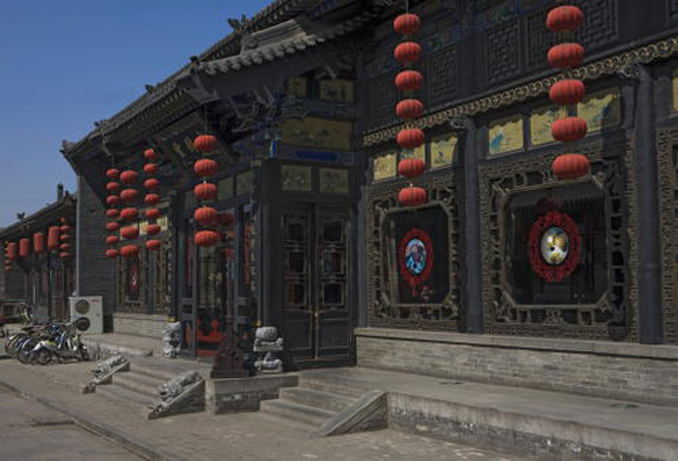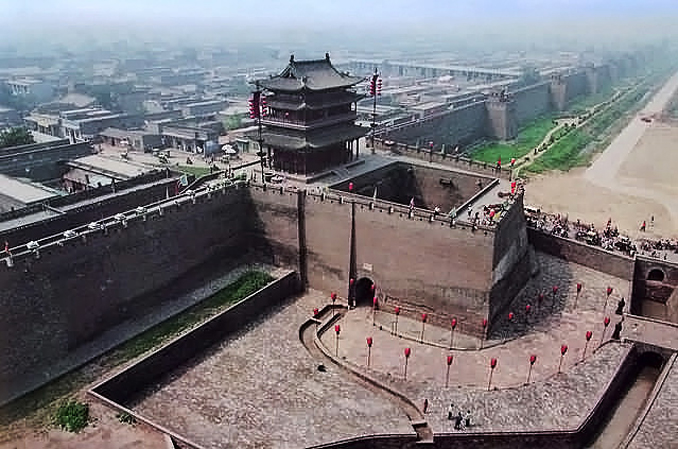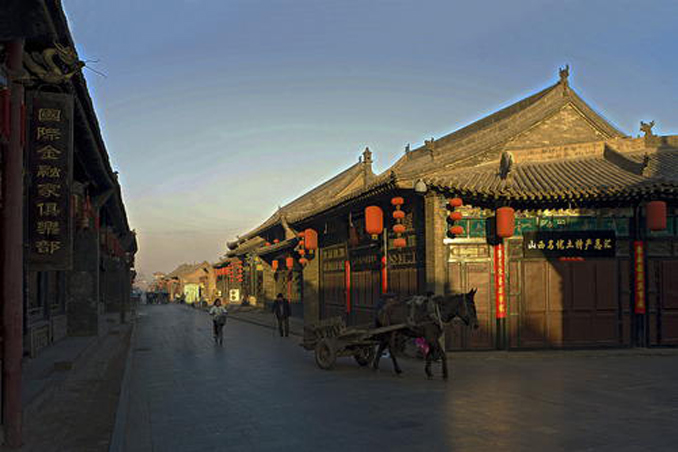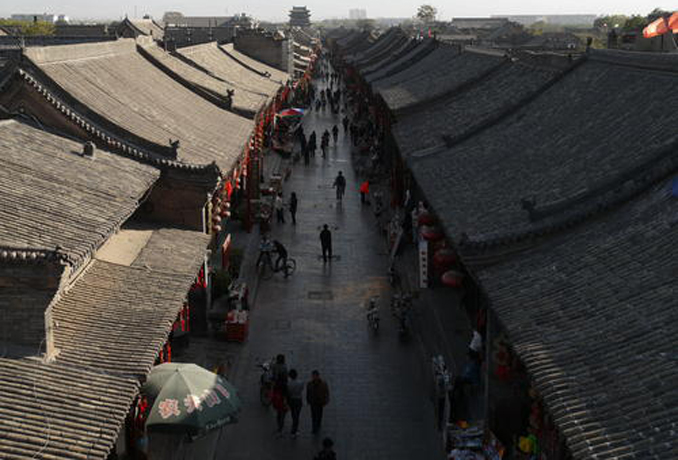Written by: Feng Yang
Posted on: July 08, 2014 |  | 中文
| 中文
What did a Chinese town look like hundreds of years from now? One will see it for oneself on a visit to Pingyao Town in Shanxi Province, North China.
The town dates back to 2,700 years ago, and has been the seat of the county government since 221 BC. The town we see today is largely what it looked like during the Ming and Qing dynasties (1368-1911). Among those ancient Chinese towns, Pingyao is the best preserved - in fact the only one where the original layout and structures have remained basically intact.
 |
The Pingyao town came on the UNESCO list of World Cultural Heritage in December, 1992. The UNESCO World Heritage Committee describes the town as an "outstanding example of Chinese Han cities in the Ming and Qing dynasties." And the town, it says, “has maintained all its original characteristics, and it presents a complete picture of development in culture, society, economy and religion in the history of China”.
The town expanded in 1370 to its present size of 2.25 square kilometers. Like most towns in the areas inhabited by people of the Han ethnic group, Pingyao is walled, with a moat flowing round the wall. There are streets and lanes, government offices, shops and religious sites in the town. A bird's-eye-view of the town reveals a town resembling a turtle in shape. In China, turtle is an auspicious animal, symbolizing longevity. The town was designed as such in hope that it would be impregnable, and therefore, survive forever. The town wall has six gates, one in the south, one in the north, two in the east and two in the west. The south gate looks like the head of the "turtle". The north gate, the tail of the "turtle", is in the lowest part of the town, which used to serve as the outlet of flooding water, drained off from inside the town. The gates in the east and west resemble the four legs of the "turtle". Immediately beyond these gates, in between the moat and the "inner wall", there is an "outer wall" designed to further strengthen the town's fortification.
 |
In feudal China, stringent administrative rules were enforced on a city or a town according to its size. For a county town like Pingyao, each side of the wall round it had to be longer than 1.5 kilometers. The side of Pingyao's town wall facing south, however, is two kilometers long, the length being required by the local terrain. The other three sides are exactly 1.5 kilometers long each. In ancient times, almost all Chinese cities and towns were walled. At present, such walls can still be seen in only four cities. Walls in three are no longer complete. Pingyao is the only place with its wall intact. The wall of Pingyao is 10 meters high, built with rammed earth with gray bricks neatly laid on its surface. It is three to six meters wide on the top, enough for six horses to gallop side by side. There is a terrace every 40 to 100 meters on the outer wall. On each terrace there stands a two-story watchtower. The upper part of the watchtower served as a battlement and the lower part was where military supplies were kept. There are altogether 3,000 embrasures and 72 watchtowers on the wall. The numbers were deliberately chosen out of respect for Chinese sage Confucius (551-497 BC), who had 3,000 followers including 72 known for their academic or political achievements. A pavilion dedicated to the God of Literature stands at the southeast corner of the wall. Structures on the wall bear evidence to the old belief that military might and intellectual wisdom combined to ensure peace and prosperity to the country.
The South Street serves as the town's axis line. On both sides of the street we find the town's most important structures, and these structures are arranged in symmetrical order. The Temple of Confucius and the Temple of the Town God are on the left side, and the Temple of Martial Valor and the old county government office are on the right side. A tower, 18.5 meters high, sits astride the town's axis line. It was and still is the town's landmark building.
 |
Shops and workshops on the major streets still maintain their outlooks of the town's heyday from the 17th century to the 19th when the town was a thriving business center. The town at the time was famous in particular as a home to China's richest dealers of dyes, a group of people who had branches in almost all parts of the country. It was also in Pingyao that the country's first private money house, Rishengchang, came into being in 1824. Together with other private money houses in Shaanxi, these were predecessors of China's banking industry.
The money house, Rishengchang, is on the West Street. By the second half of the 19th century, Pingyao had become the country's financial center. Of the 51 money houses operating across China at the time, 22 were in Pingyao - to be exact, on the West Street barely 400 meters long. These money houses had branches in hundreds of Chinese and foreign cities. They are still there - no longer in business, of course – th3 courtyards with the frontal part were once reserved for business and the rear part, as offices and residential quarters.
With the money they made, rich merchants in Pingyao built beautiful houses for themselves. All houses in Pingyao are walled compounds. In following the tradition of filial piety, the main room in a compound, in most cases a spacious, south-facing cave dwelling, was reserved for the most senior member of the family, which is flanked by one-story housing structures built with bricks and tiles. Most compounds have two, three and even four courtyards, depending on the families' financial status and political influence. Families with just one courtyard would be looked down upon for being poor and insignificant. In larger courtyards, the structures are always decorated with wooden, brick and stone carvings, as well as colorful paintings. Carvings and paintings bearing auspicious designs are found everywhere -- on walls, doors, windows and pillars. By a close examination of their themes, however, one may tell what the owner of a compound was - a trader, an official, a scholar or a farmer. In the county town of Pingyao, 3,797 compounds are counted. Of these, 400 are still in good shape.
 |
Two temples at Pingyao, the Country-Guarding Temple and the Double-Forest Temple, are on the UNESCO list of World Cultural Heritage as extensions of the ancient county town.
Fifteen kilometers to the northeast of Pingyao Town, the Country-Guarding Temple was built in the period of the Five Dynasties (907-960). The temple's main architecture, known as the Ten Thousand-Buddha Hall, is China's oldest wooden structure preserved to the present time. What is even more miraculous is that the painted sculptures in the hall show no trace of repairs even though they are more than 1,000 years old.
The Double-Forest Temple, which lies six kilometers to the southwest of Pingyao town, is 1,400 years old. It is a treasure house of ancient Chinese art with 1,566 painted sculptures, the tallest being more than three meters in height and the shortest, just 30 centimeters. Most of these were built during the Ming Dynasty.
You may also like: